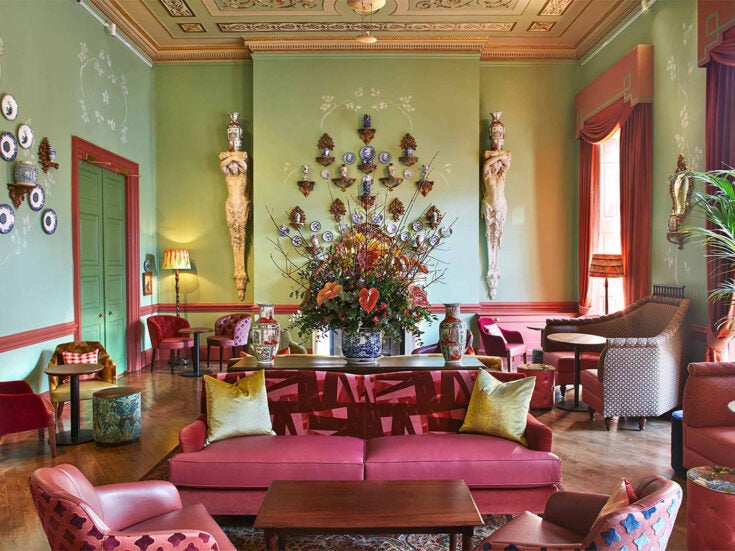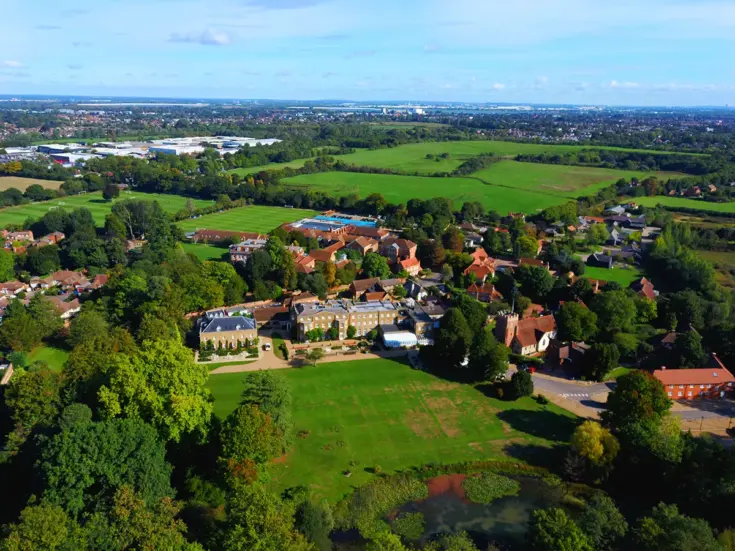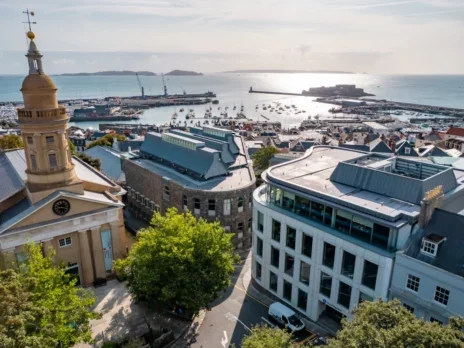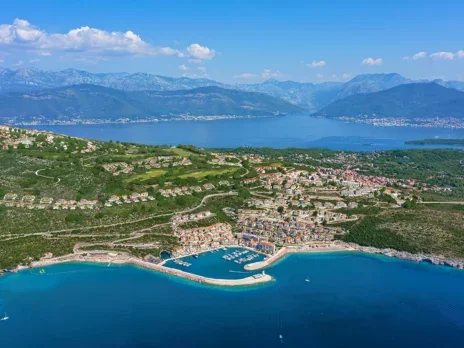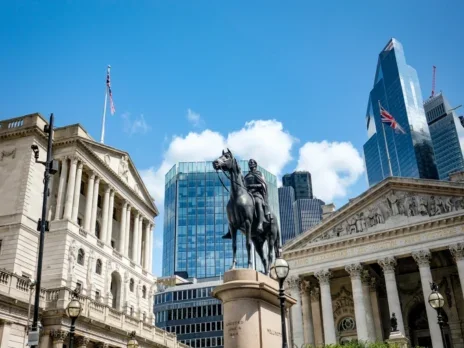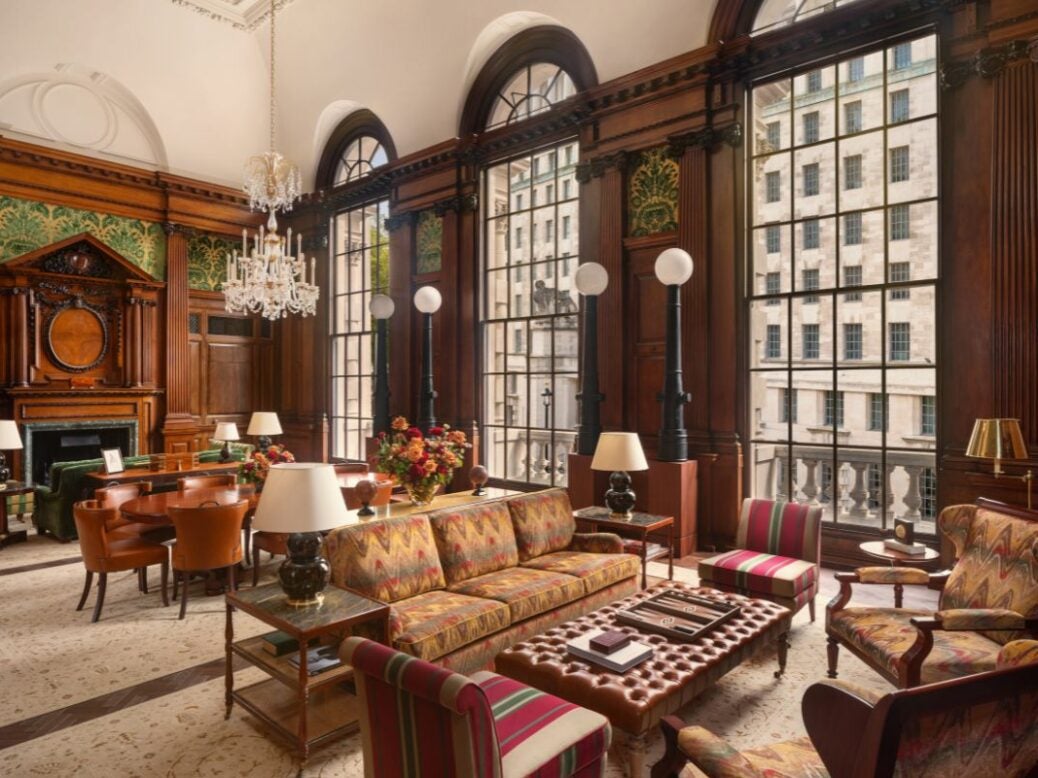
‘We shape our buildings; thereafter they shape us,’ said Winston Churchill.
No truer word, when looking at how the 20th-century history of the Old War Office has shaped the interior design, storytelling and modern-day use of its majestic staterooms, today enjoying life as luxury Heritage Suites offering accommodation and impressive meeting and entertainment spaces.
[See also: Spies and secret ops: How espionage has inspired London’s most exciting hotel]
The word ‘monumental ’is the best adjective to describe the transformation of the Old War Office into a breathtaking 750,000sq ft of Raffles London hotel suites, The OWO Residences by Raffles, wellness facilities, spa, palatial ballroom and panoply of gastronomic offerings that reflect the vibrant, cosmopolitan culture of London.
However, it is the hotel’s Heritage Suites (the former staterooms) that reflect the balance of history and modernity, luxury and dignity that are the keynotes of this building.
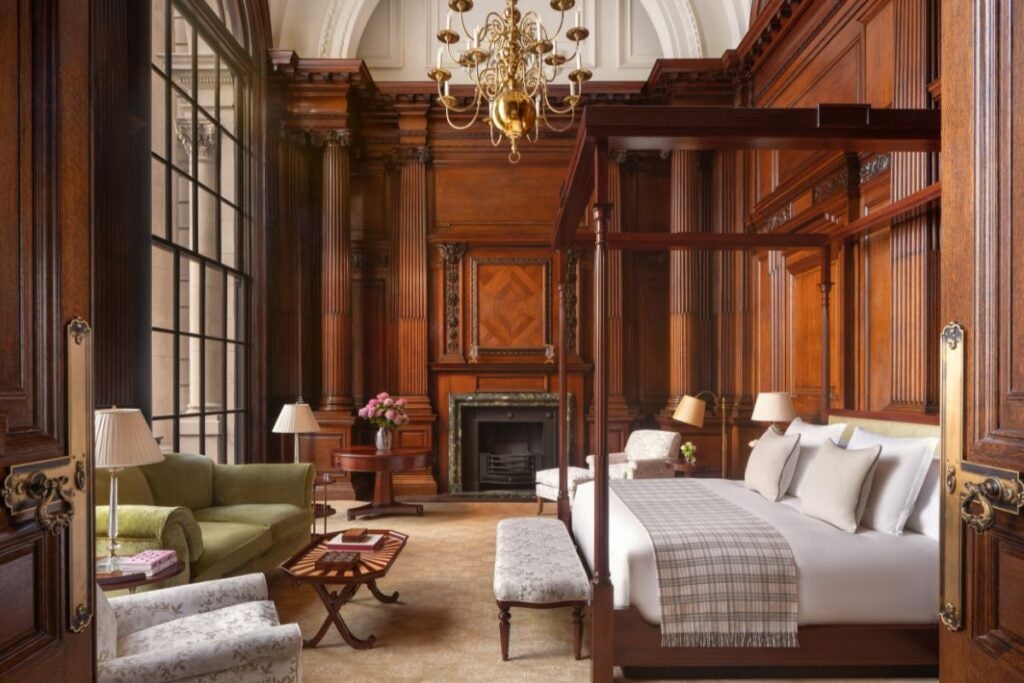
Painstakingly restored to their former grandeur by talented artisans and specialist craftspeople, and guided by leading academic and architectural authorities, these Heritage Suites are a banquet for the eyes and feast for the imagination. Guests can admire the same sculptured stone and marble fireplaces, oak wall panelling, mosaics, mouldings, gigantic windows, decorative cornicing and soaring ceiling heights that famous ministers and generals once did.
The Whitehall Wing
Now these rooms have a new life as sumptuous accommodations for those wanting the historic space all to themselves with partners and families, or for top-level board meetings, dazzling events, boutique drinks and dinner parties. The contrast in use could not be starker – one ponders the idea of Churchill himself dropping in to enjoy the present moment.
It is easy to understand why these spaces are so sought after, as their provenance is legendary and brimming with stories that helped change the course of history.
Today’s Haldane Suite, formerly the Secretary of State for War’s office, was once occupied by Lord Haldane himself, Lord Kitchener and Sir Winston Churchill. The suite is panelled in oak with a stunning decorative neo-Baroque plaster ceiling and grand windows overlooking Horse Guards and the mounted soldiers of the Household Cavalry. Reached by the Grand Hall and Staircase, this principal room on the second floor sits squarely at the centre of the Whitehall façade.
[See also: The OWO: A masterpiece of historic restoration]
The exclusive Whitehall Wing – with the Haldane Suite at its centre – would see guests occupy six opulent suites and rooms along this magnificent façade, bookended by two Art Deco Corner Suites named after Viscountess Astor (Astor Suite), the first woman seated as a Member of Parliament, and Clementine Churchill, Churchill’s beloved wife (Clementine Suite).
The Raffles Suite was formerly the Conference Room of the Minister of War, where debates were held between the military and civil service that supported the army.
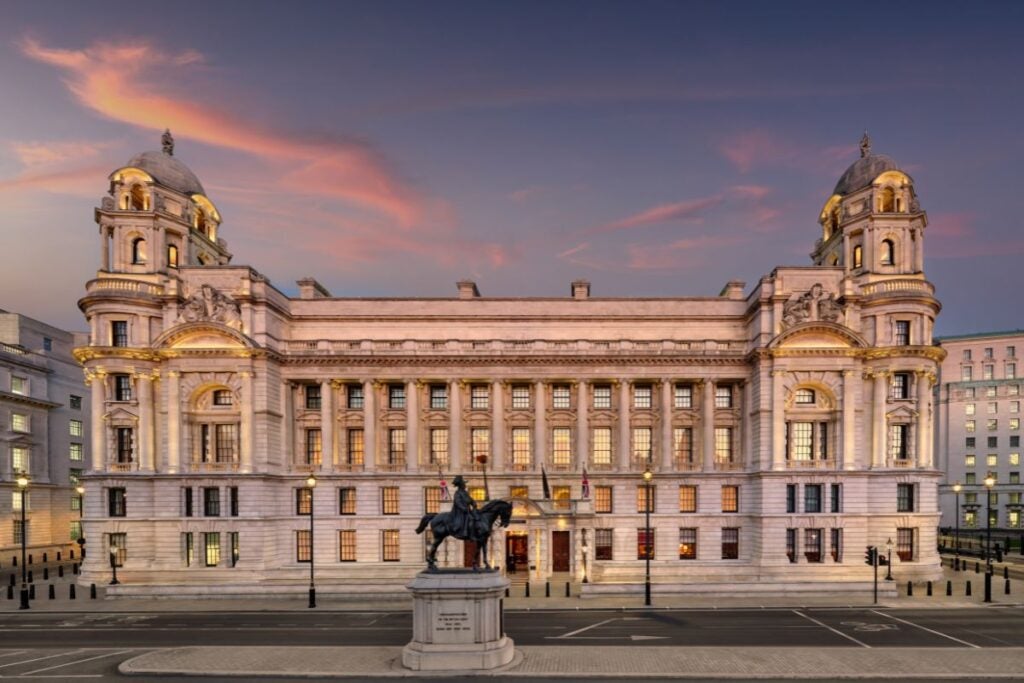
Today, it is named after Sir Stamford Raffles as a historic one- or two-bedroom suite with original features including antique fireplaces and beautifully restored stucco work. It overlooks the peaceful inner courtyard with an air of grandeur – befitting its namesake, Sir Stamford Raffles, the British statesman best known for his founding of modern Singapore.
The design of this suite pays homage to the great Singapore Raffles Hotel with scenic Chinois wallpaper entitled ‘Governor’s Visit ’and Anglo-Indian inspired carved furniture.
Consulting in style
Possibly one of the most breathtaking suites is the Granville Suite, formerly the Levee Rooms and office of the Chief of the General Staff. The most famous holder of that role was Field Marshal Alan Brooke, who was head of the British Army during the Second World War. The Levee Rooms were military reception rooms used to entertain visitors and dignitaries from around the world. It was also a hub for communication with soldiers in the field, giving direction to army personnel on location.
In Hollywood movies, this type of room is usually in a dark basement, but the Brits did their consulting with style. The first of the three rooms, now the bedroom, was once the computer room holding military intelligence. The third room, today the grand bathroom, was used by army commanders-in-chief to have a last meeting with people before they left for duty. Legend had it that if you were summoned to the room and were there more than five minutes, you didn’t have much future in the army.
[See also: The OWO Residences by Raffles: Redefining London luxury]
Today this suite is named after Christine Granville, who was known as Churchill’s favourite spy. Restored and transformed into a luxurious suite richly furnished in a Neo- Classical style, its grand ceilings, between 12 and 13 metres high, would, we imagine, feel like home from home for Granville.
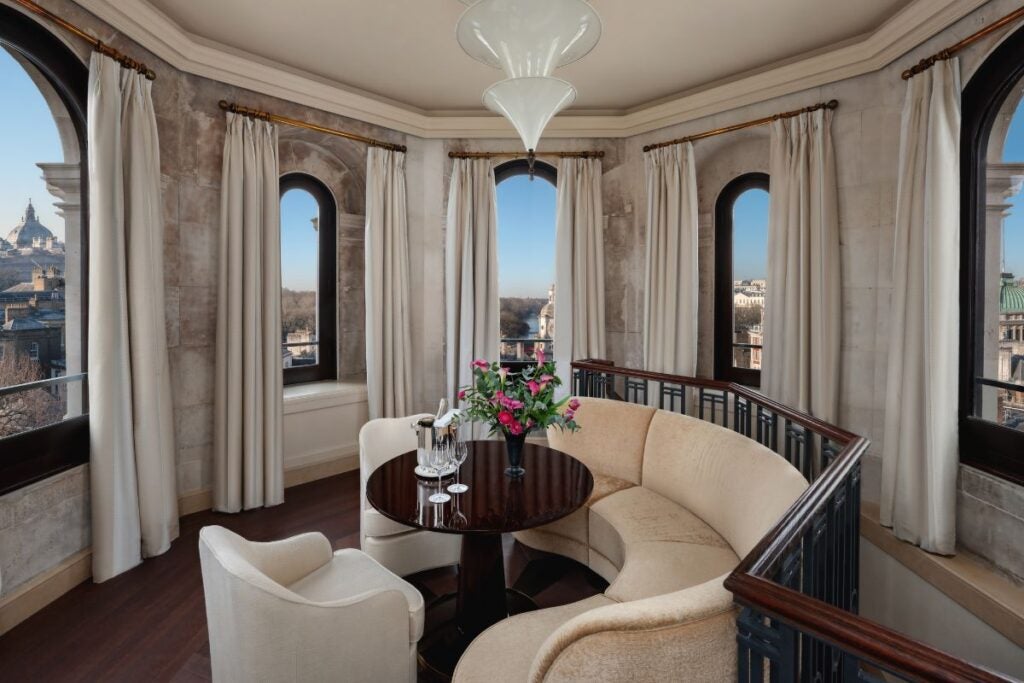
Christine Granville was in fact the alias of Krystyna Skarbek, a Polish aristocrat and agent of the British Special Operations Executive during the Second World War. She became celebrated for her daring exploits in intelligence and irregular-warfare missions in occupied Poland and France. She was the first female agent of the British to serve in the field and the longest serving of all Britain’s female wartime agents.
Where history was made
In terms of the staterooms that changed the course of history, the accolade belongs to the former Army Council Room, where all major decisions relating to the governance of the army were made. Interestingly this includes the formal acknowledgement that ‘shell shock ’was a psychological disorder, but importantly also the planning of the D-Day landings and the decisions that led to the Allied victory over Hitler.
Now known as the Churchill Suite, it is a truly exceptional suite with rich wood panelling, grand fireplaces and green Damask wall upholstery in Givenchy style. It is classical, comfortable and supremely elegant, with floor-to-ceiling windows that look towards the Houses of Parliament and Big Ben.
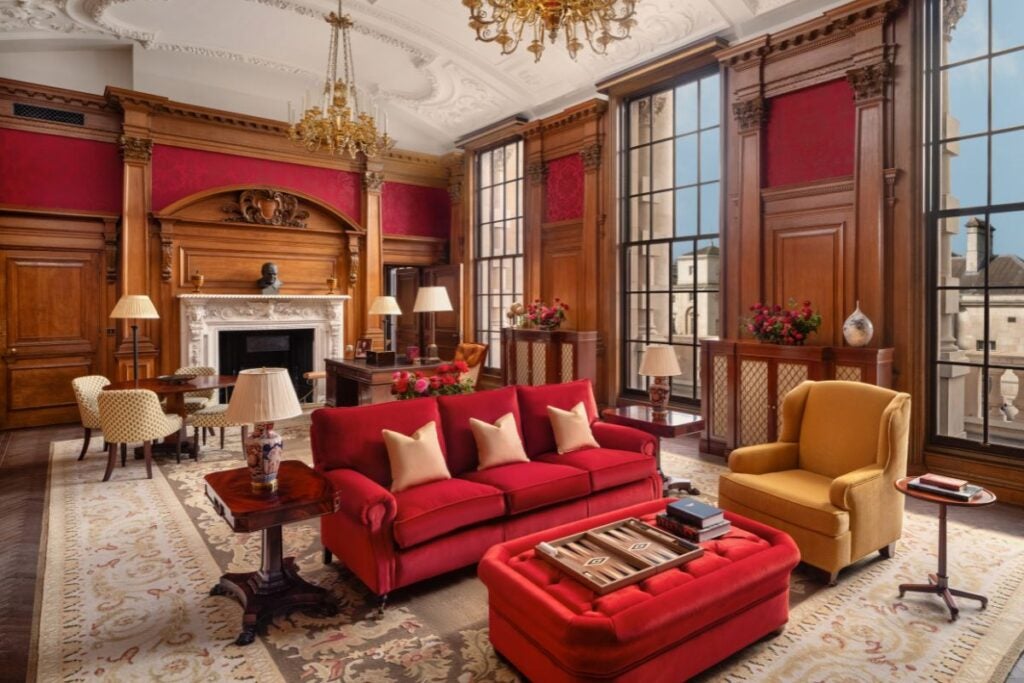
Sitting proudly atop the former Old War Office in one of its majestic domes is the Turret Suite with jaw-dropping views over Horse Guards Parade and St James’s Park towards Buckingham Palace. The suite evokes the glamorous era of the English silver screen – it’s easy to image Vivian Leigh resting on the opulent silver-upholstered bed surrounded by garden-inspired wallpaper.
During the First World War, this turret office would have overlooked the Zeppelin Terrace, acting as an important lookout position over London. An additional storey of wooden huts on the roof housed personnel, and it had a layer of netting as a rudimentary precaution against bombs.
[See also: Never tired of Whitehall]
A room with special resonance to the First World War era is the Heritage Gallery on the ground floor. Today it’s used for private dinners and small events, and a famous brass war memorial plaque is mounted on the wall and dedicated to ‘The glorious memory of the one hundred and ten members of His Majesty’s civil service in the War Office who gave their lives in the Great War’.
There is something uniquely poignant about suites where the power of history is palpable, the spirits of the great men and women who once occupied them vibrate, and the present-day glamour and grandeur inspire a magic touch to today’s inhabitants.
Perhaps Winston Churchill would approve of what has been done to his old office.
Instagram @raffleslondon.theowo / Web raffles.com/london

